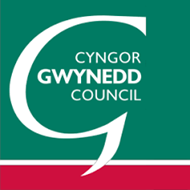Summary
Republic Technologies is a global consumer goods company with over 100 years of manufacturing history. In the UK, its products are sold in a multitude of retail settings including newsagents, supermarkets and convenience stores, and requires a traditional field sales force. Republic Technologies wanted to improve its operations and geographic deployment in the field to ensure it had the right people in the right place to optimise sales teams’ working patterns, growth and customer service.
Company size
100
Industry
Manufacturing
Products used
Challenge
Republic Technologies had a number of vacancies in its field sales team, but did not know the best places to recruit. Nor did Republic Technologies know whether it needed to fill all these vacancies. Could it scale the team back and still achieve its target call rate?
Republic Technologies’ territories were imbalanced, with some people working far more hours than others. The team was spending too much time driving. Republic Technologies wanted to optimise the territories to ensure that each person was working the same hours and maximise the time spent with customers.
Based on the anticipated changes to the territories, Republic Technologies wanted to provide each sales person with a plan of attack to help them get around their customers in the most efficient way.
Solution
CACI worked with Republic Technologies’ field managers to address these challenges. Using CACI’s proprietary InSite software, we started with headcount analysis and employed InSite’s travel time algorithm to understand the amount of driving the field team would have to make between calls. This helped to understand exactly how many hours the current team was working and what this would look like if the headcount changed. Based on these calculations the correct team size was established, giving Republic Technologies the confidence that it had struck the right balance.
From this optimised structure, CACI used its CallSmart route optimiser to deliver a set of efficient routes for each field sales rep.
Results
CACI’s work has allowed Republic Technologies to quantify the hidden work in a sales person’s day to truly understand the correct size of their field sales team. This ensured Republic Technologies was maximising the return on investment from this team.
The territory optimisation improved the balance of work across the team and reduced the amount of time spent driving. With this enhanced efficiency, Republic Technologies was able to focus its recruitment on better defined locations, filling vacancies more effectively in more targeted areas. Another benefit of this was a reduction in fuel bills.
The routing gave each sales person a daily sequences of visits that reduced the time they spent in the car and the time they spent planning.

Summary
The RAC provides complete peace of mind to more than 12.7 million UK personal and business members, whatever their driving needs. They’re famous for breakdown assistance, but they also provide motor insurance and a range of other services, including buying a new or used car, vehicle inspections and checks, legal services and traffic and travel information.
Company size
1,000 – 5,000
Industry
Transportation & Logistics
Services used
Products used
ResolvID
Challenge
The RAC had outgrown its relatively basic campaign tool. They needed something more flexible and efficient to transform the existing manual and time-intensive process for campaign delivery. Their on-premise SQL solution was hosted by a third-party agency. Poor access to data constrained the RAC marketing team, which needed to be more self-sufficient in campaign operations.
The RAC’s Data and CRM Strategy Leader, Ian Ruffle, says: “Because the legacy technology wasn’t efficient, it took over 48 hours to refresh the data. If it fell over, as it often did, because we were at the limits of the solution’s capability, it could take up to ten days from a customer being acquired to reflect that in the marketing solution. This was becoming a real problem.”
Solution
The RAC and CACI worked together to implement a suite of tools to transform the RAC’s marketing capabilities and to create the efficiencies and flexibility they needed. The first step was to build a single customer view (SCV) database using Snowflake. The pay-by-consumption processing function made it scalable and cost effective as well as future-proof. This gave the RAC direct access and control of their own data, which was a key requirement. Within Snowflake, CACI built a secure, accurate and compliant dataset, in line with GDPR requirements.
The database is hosted in the MS Azure cloud, and is refreshed and managed using Azure Functions, event triggers and DBT models. CACI’s resolution identity product, ResolvID, also plays a part in the solution. It’s hosted in Amazon Web Services (AWS) and consumed in real-time as event-triggered files are added into the database. This gives the RAC a complete view of each customer across multiple datasets and sources, allowing them to engage their customers in a more holistic way.
CACI implemented Adobe Campaign, Target and Analytics. For the campaign implementation, the team created 42 different tables and two different data structures – one for the B2C side of RAC’s business and one for the B2B side. Then, the RAC and CACI worked together to migrate all their existing campaigns from their legacy solution into the new Adobe Campaign instance, automating everywhere that was possible.
Adobe Triggers mean that web-based events from the customer can feed through into Adobe Campaign in real time. The RAC are using this for their enhanced abandoned baskets campaign. Communication can be triggered instantly, catching customers at a key point in the purchase lifecycle.
With Adobe Target, customer journeys can be personalised throughout the RAC’s website. Now, when a customer lands on the home page, they see personalised content based on interaction they’ve had with the brand before and products that they have or have not purchased.
Results
CACI’s team worked closely with the RAC design team to create them an on-brand template within the CACI Email Studio application. This reduced their previous dependency on third party creative agencies. Now, the RAC team is empowered to control and to create their own emails, without needing an HTML skillset. Email Studio delivers confidence in the usability and the rendering of emails when they land in the customer’s inbox, making sure it’s a positive experience throughout.
Ian Ruffle quantifies the value of the transformation: “Our marketing activation project has delivered a seven-fold improvement in data latency. We’re getting a reliable daily build of the core tables, plus many tables maintained in real time or via hourly batch processes, to meet the various trigger needs of the business.
“75% of the campaigns in the new solution are fully automated. We’re in the process of embedding this for newer campaigns. This gives our teams a huge amount more time to think about how to optimise the campaign and get the best ROI. At the roadside, when customers aren’t sure where their patrol was, they phone us. We’ve seen a 6% reduction in these calls, which is huge for us. It’s a massive cost saving and a much better customer experience, to be kept fully informed”


Summary
Principality Building Society developed a new highly focused proposition using Fresco’s insight on consumer behaviour and needs, aimed at the rising metropolitans segment. The targeted campaign produced triple the expected uptake of its innovative First Home Steps app.
Company size
1,000
Industry
Financial
Products used
Challenge
Principality’s portfolio and propositions teams have been working together to define and understand new target customer segments and design services and products to meet their needs. With a loyal and long-standing customer base, the team wanted to find a way to engage with younger customers nearer the start of their savings journey.
Principality has always used data to support planning and risk assessment and to measure performance. Principality has evolved the use of demographic, lifestyle and market data from CACI to further refine its customer and market insights. Using CACI’s Fresco segmentation was an obvious choice to support the project. Fresco describes individuals in terms of their financial product holdings, attitudes, life stage, affluence and digital behaviour. Principality wanted to differentiate through propositions with better customer type information.
Solution
Very often, insight is siloed within teams. Data is purchased and used for specific projects and activities. For the First Home Steps proposition, Principality shared insight across all the teams and individuals involved in planning and delivering the campaign.
CACI presented data insight to a multi-functional Principality team, showing how it could help to refine different aspects of the proposition and supporting the communication campaign. The data was used from the start, informing every aspect of proposition development. Principality combined CACI’s Fresco insight with its own research into first time buyers to produce a robust and differentiated evidence base that informed every First Home Steps decision.
The Fresco data helped build a picture of the target group and to understand their needs, in the context of how they live and work and the challenges they face in saving and planning. First Home Steps addresses the rising metropolitan segment, aiming to appeal to those looking to the future and saving to buy their first property.
The Fresco insight helped Principality’s team understand exactly how to reach the people it had identified, showing geographic areas where there was a high proportion of rising metropolitan consumer households. This supported targeting of ads and resources.
Results
The proposition team launched the First Home Steps campaign to educate and support younger adults who have reached the stage of wanting to buy a house, so they can be confident in their ability to manage their finances and buying decisions.
Promoted and supported in-branch, First Home Steps offers ‘workouts’ to get homebuying hopefuls financially and practically fit to obtain a mortgage and buy their first home. Resources include a borrowing calculator, a budget planner, house prices guide and savings tips. It’s all brought together in the First Home Steps app, a free pocket guide to the house-buying process. Principality hopes to motivate users to open a First Home Steps savings account, to save towards a mortgage deposit.
“We launched in branch and the campaign exceeded targets, especially for people downloading the app, with triple the numbers expected. From the first phase of the campaign the insight basis has given us great confidence for the next stage.”


Susan David, Propositions Manager, Principality Building Society
Sharing the data insight with colleagues from all parts of the business has not only created a stronger proposition, it has driven interest and positive support from branch colleagues who talk to branch visitors about their finances. They have been advocates for the app, able to talk knowledgeably and empathetically with branch visitors who might benefit, armed with a clear understanding of their likely needs and attitudes.
Principality has a mature approach to data, using a range of sources intelligently and collaboratively. They use their budget smartly, ensuring that they make full and focused use of the insight sources they subscribe to. CACI’s resources and services are key tools that help them retain loyal customers and to innovate. As well as delivering proposition insight, Fresco helps Principality understand branch footfall and customer profiles. Weekly flow information from CACI’s Retail Finance Benchmarking Mortgages and Savings provides the market context.
Summary
Caerphilly County Borough Council uses Cygnum to operate its Home Care and Reablement services. These provide vital care and support to those in need within the borough, supporting people to stay at home. The smooth running of these services is vital to ensure that Caerphilly can look after those in need in a timely and appropriate manner. To operate an effective service, Caerphilly relies upon a team of approximately 300 staff, which it schedules through Cygnum.
Industry
Healthcare
Services used
Products used
Challenge
Frontline services didn’t stop during COVID-19: councils still needed to deliver their key services and Caerphilly was no different. With previously office-based staff now working from home, it necessitated a rethink in how Caerphilly received account management, training and support from CACI in its use of Cygnum.
Solution
Caerphilly County Borough Council has been using Cygnum from CACI for over a decade to provide its workforce management solutions, ensuring that it has the right people in the right places, performing the right tasks. As a council, Caerphilly must monitor several different areas, making flexibility a requirement that must sit at the heart of its operations. It was vital, therefore, that Caerphilly quickly found nimble solutions when faced with the mandatory lockdown put in place at the outbreak of COVID-19.
FUSION is CACI’s project management delivery methodology, which helps its clients shape, create and utilise its services. FUSIONhub is an extension of this methodology designed to encompass and embrace off-premise project delivery.
Acting as a virtual consultancy, FUSIONhub enables all users to keep in touch and keep up to date, wherever they are. All of CACI’s processes, tools and deliverables are available whenever and wherever they are needed. Taking advantage of an increasingly connected world, FUSIONhub delivers unparalleled flexibility in project management and delivery.
Results
During the 11 years that Cygnum has been supporting Caerphilly, a well-established relationship has formed along more traditional lines. Remote meetings and training have always been a possibility, but have never previously been a necessity.
To continue delivering a smooth and flexible service, Cygnum uses CACI’s FUSIONhub methodology to ensure that all meetings, training sessions and other deliverables can be completed remotely. Using third party software, it means that the Cygnum team was able to deliver training to Caerphilly via their preferred platform, in this case Zoom. FUSIONhub is available via other virtual meeting rooms such as GoToMeeting, Teams and Skype, too.


Summary
The Midcounties Co-operative is a large consumer co-operative fully owned by its members, which operates the Your Co-op family of businesses. Founded in the mid-19th century to share goods and services at a responsible price in the community, the Midcounties Co-op presently operates from more than 230 food retail stores in the UK, largely across the West Midlands, Oxfordshire, Gloucestershire and Wiltshire. The organisation also trades nationally through the Co-op Pharmacy, Co-op Travel, Co-op Childcare, Co-op Energy and Phone Co-op businesses, as well as operating a funeral care business and Post Offices. Every Co-op business is built on robust ethical values designed to foster a strong business and community.
Company size
5,000+
Industry
Retail
Products used
Challenge
When Ross Lacey joined Midcounties in 2017, he stepped into the newly created role of Location Planning Manager. His task was to help the business grow through a greater focus on location analytics and data-led decision-making.
The team built some strong working relationships with developers and agents, but in order to continue to grow the new site pipeline in line with the ambitions of the business, they needed to adopt a more targeted approach.
This meant developing accurate and reliable spatial and geo-demographic modelling to understand catchments in the context of business objectives and performance.
Solution
CACI’s InSite tools and data provided the comprehensive information Ross needed to analyse the core trading area. He analysed mapping data and catchments in every village and town in the Co-op’s trading area, looking at existing stores, competition and demographics.
The model has been continuously updated since it was created, feeding in new data from CACI that reflects changes in catchments, communities and demographics. Ross and his team have also adopted new HTML mapping tools which make it easier to share links with colleagues around the business who request site and catchment information.
Working closely with CACI, the team has recently developed a suite of dashboards that present key information about store performance within a catchment in a visual format. These are automatically updated, so the most useful and comparative data is continuously available without the need to design individual reports. Ross is also impressed with the aesthetics of the dashboard output: “It’s important to me that data we share with colleagues is easy to understand and well-presented visually: the reports have been really well received and had an impact around the business because of this.”
Results
The InSite tools, dashboard and data have given Midcounties reliable evidence for new site investment prioritisation. According to Ross:
“The rigorous approach has built strong confidence in our pipeline of planned sites. As well, greater confidence in our sales forecasting has enabled us to be more aggressive in our rental offers as we compete with other multiples for the best sites. Since introducing the model into our new site appraisal process, we’ve seen strong and consistent performance from new sites.”
With the automated and visual reporting from the dashboard and well-defined catchment analysis processes, Ross and his team can work more efficiently and free up time to champion data-led decision-making in other areas of the Midcounties.


Summary
With disruptions to traditional training methods increasing during the COVID-19 pandemic, CACI’s FUSIONhub along with the Cygnum team helped ensure Gwynedd Council could successfully deliver remote training and keep projects progressing remotely.
Industry
Healthcare
Products used
Challenge
In normal circumstances, CACI would have arranged for the course trainer — in this case, Cygnum Product Manager, Matt Lewis— to visit Gwynedd Council’s offices to deliver a two-day training course to stakeholders in person. With lockdown rules in place, however, this was not possible.
“Neither Chris, the Systems Manager, nor myself were in our current posts when Cygnum was first implemented at Gwynedd,” says Mark. “It is something I’ve inherited following an internal restructuring and I was keen that we get up to speed with the system as quickly as possible to get the most from it.”
“Chris was more familiar with the system than me, having been trained on it by his predecessor, but we wanted some formal training to better understand Cygnum’s reporting functionality.”
Solution
Gwynedd Council has been using Cygnum for a decade to support its care services across the county, scheduling carers and keeping track of those in care. Deploying a team of 330 carers to operate their services, these essential services remained in full flow throughout the COVID-19 pandemic, proving to be vital to ensuring the ongoing safety of those in care and those providing the care.
Despite many changes — not least in personnel during that time — Mark Hughes, Systems Manager at the Council, required training for himself and his colleague, Chris Griffith, Systems Officer.
CACI devised its FUSIONhub project delivery methodology around virtual management to continue driving projects forward despite people avoiding the office during the pandemic. This was not only vitally important to CACI, but to customers as well.
Cygnum Product Manager, Matt, used Cygnum’s standard training course in a way which was responsive to Gwynedd’s specific needs around Cygnum’s reporting functionality. The course was delivered across four half-day sessions rather than the usual two full days via Microsoft Teams.
“Matt was very professional and really knew his stuff,” Mark explained. “He ensured that the sessions were very informative and interactive and kept it interesting at all times. Matt was brilliant, to be honest.”
While there was some apprehension for Gwynedd around delivering such an important training programme virtually, it was a step that needed to be taken.
Results
“The training has been invaluable,” Mark said. “It enabled us to make richer use of Cygnum’s reporting functionality and to improve some of the work processes we have in place. We managed to automate several reports and decrease the manual intervention to format others, giving the end user and managers better quality reporting to use across our services.”


Summary
Wrightington, Wigan and Leigh Teaching Hospitals NHS Foundation Trust (WWL) are a major acute and community trust dedicated to providing the best possible healthcare. Operating across five hospital sites and numerous community locations, they invest around £300m each year in order to design their services around the needs of their patients.
Company size
4,600+
Industry
Healthcare
Products used
Challenge
WWL saw an opportunity for change. After years of working stuck between two data warehouse versions, the WWL team were consumed by delays, hours of manual processing and a solution that was unreliable and not fit for purpose. As Mark Singleton, Associate Director of IM&T at the Trust would later describe: “the future didn’t look bright” — they needed something better.
As increasing mergers and collaboration between trusts was starting to take place, the business case for a new solution emerged — one that would meet all of their requirements, starting with a single version of the truth.
WWL looked at their options, knowing they needed a single data warehouse solution and while in the past this may have been done in house, the Trust concluded this wouldn’t meet the timeframe objectives, and with that in mind went out to tender for a partner to help bring in this solution.
Solution
CACI were initially appointed by WWL to implement their proposed solution: InView Express.
The InView data warehouse solution was specifically designed for the NHS market and when CACI were appointed by WWL, it had already been implemented in many trusts across the UK.
WWL could see the design of InView had incorporated the complexities required for an NHS data warehouse. It would allow them to produce the Trust’s national datasets and statutory returns and bring all siloed data sources into a single data warehouse, providing an accurate and co-ordinated view of the Trust’s services.
Plus, with the intuitive environment of InView, users across the Trust would be able view and analyse the data easily, and subsequently make effective decisions in an efficient way.
Thinking of the future ahead, WWL took the decision to take on all of the InView modules at the beginning, providing the capability to grow as they took on new data sources. This would soon provide to be an invaluable decision.
After benefiting from the InView solution for a few years and expanding its use, a new challenge appeared: WWL were to take on Community and Mental Health services, and this was a significant increase to their services and data.
Mark Singleton, Associate Director of IM&T at WWL, explains: “It’s not everyday that you’re being asked to grow services by 20-25%”, and that taking on these new areas would bring with it many different national datasets that the Trust had never dealt with before.
With additional returns and outputs due in a short space of time, WWL turned to CACI’s experience in working with community data to help them develop these new datasets in order to meet the national standard.
Results
Since implementing InView and later expanding it to support the new Trust requirements, WWL now have a reliable foundation which frees up capacity to focus on analysis of data and more strategic goals.
The team no longer spend time troubleshooting issues or hours processing data manually and can take on proactive improvements in house such as developing SQL.
WWL are making the most of the robustness of InView, with their database projected to be almost 2TB by 2021. For the Trust this is invaluable, as with some tables containing over 150 million records, they are able to record and manage vast amounts of historical data.


As CACI has invested and improved InView over the past few years, WWL are also utilising the regular updates in order to continually improve and evolve their reporting. Recently WWL have been looking at semantic reporting as a next step to improving the consolidated view of data across the Trust and will be further enhancing their deployment by using the new InView Extensions functionality
By optimising their use of InView, focusing on data analysis and striving to be a data-driven organisation through continual improvements, WWL are empowered to make efficiency savings, and improve the quality of care for patients across Wigan.
Summary
As one of the largest hospital trusts in the UK with an annual turnover of £532 million, North Bristol NHS Trust (NBT) recognised the value that implementing new data architecture and deploying business intelligence software would have on wider business outcomes. To achieve this, they enlisted a trusted data partner, CACI.
Industry
Healthcare
Products used
Challenge
NBT was struggling with NHS statutory changes, reporting pressures, disparate systems and data quality overheads. In order to solve these challenges, NBT looked to implement a Trust-wide data warehouse and business intelligence solution.
In addition to the data warehousing solution, NBT had many disparate reporting tool options, and it was important to implement one solution where any member of staff could go to source any report or dashboard output.
Following implementation, NBT needed the solution to be maintained under a managed service offering but built in a way to ensure self-sufficiency in the Trust’s team, so that the solution could be extended in line with new and changed requirements
Solution
NBT chose CACI to provide and implement a new data architecture including a Trust-wide data warehouse solution, managed service support, and deployment of leading business intelligence (BI) software.
The solution integrates a vast quantity of data from many disparate sources including administrative, clinical and finance systems. Additionally, the solution incorporates business logic in order to calculate and model the Trust’s income. The solution is fully maintained by CACI through the provision of a managed service and a structured product release schedule.
The solution incorporates a layered database architecture incorporating integration, Operational Data Store, translation, star schema and semantic data mart layers. This design reduces ongoing maintenance costs and increases flexibility to new requirements or interface changes.
Historical data integrity is preserved through the implementation of an efficient, slowly changing dimensions design, and a full data quality process is built into the data flow enabling reporting and resolution of data quality issues. Both row and column-level security governance is built into the design along with NHS privacy measures.
The logical design of the solution along with its interfaces is documented along with physical database design features to achieve optimal performance on the operating platform.
Data was migrated and re-factored from legacy solutions to maintain data history, and particular attention was made to how the cut-over point was implemented.
NBT benefited from CACI’s experience in promoting outcome-based dashboards for the healthcare sector. This enabled NBT to set up the best possible framework and method for rollout of BI analytics across the organisation, ensuring high stakeholder engagement for outcome alignment and adoption of change. Experience in the use of data science has allowed the Trust to further exploit its data to help improve patient outcomes through accurate predictions.
Results
Since implementation, NBT has been able to centralise its BI function and source all data through the single-governed version of the truth. It has ensured data readiness, completeness and accuracy is in place and always available for reporting.
NBT’s income is comprehensively calculated on a daily basis, with data quality issues managed and corrected in a timely fashion. The accuracy and completeness of this process has delivered a significant financial benefit to the Trust and an early return on investment.
Data is readily available and accessible to stakeholders across the Trust via a centralised portal, with most data updated on a daily basis and some updated every two minutes, allowing near real-time decision making.


Following a jointly executed project, training and knowledge transfer, the NBT team are fully empowered and self-sufficient in the use and future expansion of the solution. This covers construction of analytics and addition of new data sources.
Through the innovative design of the CACI solution, NBT benefits from a fully-maintained core product, yet retain the flexibility to expand the solution to meet local and future needs (e.g. adding new data attributes, entities and rules).
NBT are part of the CACI NHS User Community and benefit from the sharing of content and ideas with other trusts, as well as benefitting from CACI’s commitment to and investment in the NHS.
Summary
When North Bristol Trust (NBT) was tasked with migrating their existing reporting tool to Power BI, CACI was their trusted partner that supported the successful production of a migration readiness package. This readiness package included a detailed report of all quantitative and qualitative findings, a newfound understanding of existing functions and capabilities, a reassessment of future requirements and definitive progression of next steps in the Trust’s migration from business case creation to sign-off.
NBT possessed over 100 reports in their pre-existing analytics platform, ranging from list-based for front line, operational workers to more backend, dashboard and analysis reports for email distribution. Once these reports needed to move from NBT’s pre-existing system to Power BI, the Trust wanted to understand and reconsider their design, particularly its contents and data structure.
Andrew Elliott, Head of Data Analytics at North Bristol Trust, has handled analytics platform outputs and has been a key player in the Trust’s Power BI migration.
Company size
13,000+
Industry
Healthcare
Products used
Power BI
Challenge
The first course of action identified for NBT was the need to improve efficiency when creating reports. This was a multi-step action, not simply addressing the speed at which reports are updated, but the efficiency and maintenance of data.
To achieve this, Andrew’s team revisited their hospital data analysis practices to ensure they would remain up-to-date, reliable and accurate.
There was also an emphasis on redesigning the data models that fed the reports to meet requirements. This required a substantial amount of analysis to understand where data was coming from and what NBT was doing with that data to display the report. Once this analysis was complete, NBT had to consider how it could be streamlined to become more efficient and recreate that logic in a new location within their data warehouse.
Solution
This process took the Trust substantial time and input from CACI, with Richard Brennan, CACI’s Principal Consultant, working on the mapping process and providing ongoing support to Andrew’s team.
Determining the best data design followed this. Andrew’s team had ambitions on what the Trust wanted to do with their data, an especially crucial factor being that through Power BI, other analysts from across the hospital could be brought on board.
In the weeks prior to going live, Andrew’s team liaised with key individuals across the Trust on upcoming reports, Power BI was displayed on the intranet’s homepage and a Power BI developer group was established for updates from Andrew’s team, their use of Power BI and best practice sharing.
Once the reports were signed off as tested, they were moved into the appropriate workspace apps for users. A soft launch took place prior to go-live to ensure comfortability of using Power BI and address any final issues. Finally, users were added to groups for immediate access and the original platform was turned off, marking the official introduction of Power BI.
The diversity of requirements and revisiting the data design were two pivotal focal points to be reprioritised over the course of the implementation.
The ambition around optimised data design was initially obfuscated due to the comparatively little data available from clinical divisions and departments across the hospital that used Excel. This prompted Andrew and his team to encourage the use of one cohesive reporting platform to ensure data sufficiency, accuracy and reliability, creating an environment that analysts would engage with and host their reporting on.
The immense size of this ambition quickly became clear to the Trust, particularly regarding the data scope, the systems it took from, the amount of available data and the data used by divisional analysts. Upon further investigation into data sources, an added layer of complexity came to be: rebuilding all the data sources into a new data model would be impossible to achieve by the stringent deadline. With CACI’s help, however, the situation took a positive turn.
“CACI provided helpful support and advice [during this time], even during times where I think our project had gone from a green to an amber stage where we were coming into the last couple of months,” Andrew shared. “CACI was incredibly supportive of the decisions that we were making, also contributing to those decisions themselves.”
Results
Richard’s Power BI configuration set up Andrew’s team for a successful first few weeks of post-go-live, with the team receiving about 600 hits on reports in the first two days post-go-live and approximately 60 support requests.
According to Andrew, Richard’s continued support in demonstrating any changes to the semantic models, identifying any issues with uploading data or explaining the environment’s functions has been particularly useful.
“We had Richard in the background with any small changes that we wanted to do with the data loads or semantic models, and that support was useful in the run-up and afterwards, because we’ve watched how to look after this system as Richard has built it, but when you’re actually live and you’ve got to look after yourself, it’s nice to have that bit of hand-holding as you learn,” he explained.


NBT has presently moved out of the post-go-live period of constant close monitoring and rapid issue resolution towards a business-as-usual position. Plans for future enhancements can now be reviewed, along with an assessment of the Trust’s future and the potential of reaching a similar outcome with NBT’s partner, UHBW, enabling both data teams to identically view data across Trusts and share it seamlessly.
The project’s success also led to Andrew and his team being nominated by NBT’s Operations leadership for their annual staff award, an internal mark of excellence and recognition for a project well-delivered.
Summary
Our customer, a central government department, operates with a diverse and complex array of technology solutions consisting of hundreds of systems, applications and services that support its operations.
The Chief Technology Officer (CTO) identified a significant gap in management information regarding IT and its alignment with broader business objectives. This gap has hindered the leadership team’s ability to make informed strategic and investment decisions.
IT services are provided by commercial suppliers, other government departments and internal development teams, often leading to disparate data, duplication, technical debt and therefore waste.
The department has a strategy to drive change and ensure operational effectiveness and efficiency for taxpayers’ benefit. The CTO is responsible for IT day-to-day operations and makes decisions on investments to innovate, grow, maintain and retire systems within the IT estate, ensuring alignment with the departmental strategy.
Industry
Consulting & Tech Services
Services used
Products Used
Challenge
The CTO faced challenges in driving this strategy due to a lack of knowledge about the state and interdependencies of systems within the IT estate, complicating evidence-based investment decision-making. The necessary information was not readily available, often leading to lengthy, one-off investigations to surface the necessary data.
To address this issue, the CTO initiated the establishment of Enterprise, Business and Solution Architecture practices. These practices will create architectures to be stored in a single repository, providing a cohesive link from strategy through business and applications to the underlying technology.
A key requirement for the architecture was that it would be a live digital resource actively used and maintained by a wide community across the organisation. If this is not achieved, the architecture risks becoming outdated and unable to provide the answers it was designed to address.
Issues driving strategy due to a lack of understanding
Difficulty making evidence-based investment decisions
Information not readily available, manual process to surface data required
Solution
CACI was engaged to scope and define the architecture to be captured and provide assurance that it would be sustainable and fit for purpose. CACI collaborated with the customer to agree the activities required to achieve the goal:
- Discovering the questions the architecture needed to answer. This activity augmented findings from earlier work, as well as further consultation with stakeholders.
- Defining a meta-model that can capture the architecture that will answer these questions, such as which business capabilities would be affected by the degradation or loss of an IT system.
- Estimating the volume of elements and relationships within the model and the amount of effort to maintain it.
- Demonstrate that the meta-model is sufficient to accommodate and assist with an inflight initiative (Move to Product) to reorganise IT product management (e.g. progress on understanding product and system life cycle and interdependencies).
- Demonstrate that, when populated, the architecture repository will support other initiatives such as (Move to Cloud) migrating IT from on-premises into cloud services, ultimately future-proofing the practice.
Results
The project produced the following results:
- CACI helped the department achieve a sufficient level of maturity in its architecture practices, along with artefacts and skills, to continue the journey to a fully mature capability.
- The department is reusing and building on the architecture captured to date to continuously monitor progress and alignment with strategic goals.
- The artefacts generated by the Move to Product initiative are being used to populate the repository, enabling IT to be aligned with value and strategic goals through a baselined Business Capability Model (BCM).
- This, in turn, is being integrated with other corporate data sources to produce dashboards for decision-making at board meetings.


The department has adopted the solution and, unaided, its architects are now populating the repository. Having started small, there is now an appetite to extend the reach of the architecture captured to cover other aspects of concern to the CTO (e.g. security and information flows). CACI aims to assist the department in achieving these goals through several targeted assignments over the next financial year.
Summary
Zero Gravity is a digital platform connecting low-income students in years 12 and 13 with undergraduate mentors for app-based mentoring into highly selective universities. Zero Gravity has previously worked with CACI to enrich their understanding of the backgrounds of thousands of applicants through CACI’s Acorn. This is a geodemographic segmentation of the wider UK population used to assess students’ socio-economic backgrounds based on their postcodes.
Company size
50
Industry
Education
Products used
Challenge
Matching social and economic needs with educational and career opportunities is one of the major challenges that Zero Gravity has sought to address.
Every year, around 50,000 students from socially mobile backgrounds achieve top GCSEs. However, only a third of these students make it to highly selective universities, and even fewer progress into top graduate careers. This discrepancy underscores a prevalent issue: while talent is evenly distributed across socio-economic backgrounds, opportunity is not.
The underrepresentation of socially mobile talent at elite universities and in prestigious careers is not due to a lack of ability. Instead, factors such as the “Network Advantage” (the intangible advantage of having access to a broad professional network identified in Zero Gravity’s Gap Zero report), resource shortages and imposter syndrome often hold these students back. The challenge for Zero Gravity is to bridge this gap, ensuring that talent from low-opportunity backgrounds can access the education and careers they deserve.
Solution
To address this challenge, Zero Gravity developed a sophisticated ‘potential identification system’ to identify and support socially mobile talent. A key component of this algorithm is the integration of contextual student profiling from Acorn. Insights drawn from Acorn provide a granular understanding of the socio-economic environment faced by students at home, enabling Zero Gravity to accurately evaluate their academic potential and their challenges.
By combining this information with Zero Gravity’s own academic performance data, the algorithm indexes top-performing students within the bottom groups of social advantage. This allows Zero Gravity to connect with socially mobile talent at the earliest stages of their educational journey.
By providing rich socio-economic insights, Acorn enhances the precision of Zero Gravity’s talent identification process, ensuring that support is directed towards students who are not only high achieving, but also from disadvantaged backgrounds.
Results
In the most recent academic cycle, Zero Gravity has achieved remarkable success by helping over 8,000 students from low-opportunity backgrounds secure places at top-tier universities – all free of charge – due to the social value the organisation drives. Notably, 800 of these students gained admission to Oxford and Cambridge, both of which rank among the top 10 higher education institutions globally. Additionally, Zero Gravity has launched the Zero Gravity Fund, directing nearly £1.5 million towards scholarships for its latest cohort of students.
The success of the current model has enabled Zero Gravity to focus on other opportunities to support disadvantaged students. The university mentoring platform has been such a success that they’ve now developed an innovative new service to help students into the workplace following graduation. Zero Gravity now pairs these young people with industry mentors and provides them with tailored support to access leading universities and, ultimately, successful careers. This enhanced approach not only equips students with the tools and guidance needed to reach their full potential but also contributes to a more diverse and inclusive talent pipeline for employers.


Summary
Youth Justice Services in Cheshire (covering Cheshire East and West, Halton and Warrington) is one of the largest youth offending teams in the country covering four local authorities. The service benefits from a future-focused, multi-agency and multi-professional youth justice system that complies with the YJB AssetPlus framework, whilst supporting data exchange with 3rd party systems.
Industry
Education
Products used
Challenge
Youth Justice Services in Cheshire is at the forefront of multiagency innovation with initiatives such as their liaison and diversion services, public protection management, safeguarding and complex-needs boards. Such initiatives depend on timely and effective intelligence and information exchange between multiple agencies that can be accessed securely at any time from a wide range of locations and networks.
Solution
CACI is working with Youth Justice Services in Cheshire, through the recently launched Centre of Excellence partnership, to explore new ways of organising and accessing common data. So far this has involved integrating data from a number of sources across the four local authorities and piloting a new mobile app to enable partner agencies to input case data through a single interface.
Results
CACI’s partnership with Youth Justice Services in Cheshire has helped to better serve young people and their families and generate better life outcomes at lower cost. This is delivered through innovation in the way in which they manage their service and information exchange across the four local authorities, irrespective of political imperatives and priorities.


Summary
Westminster Council approached CACI for support in harnessing the council-wide power of mobile footfall data. Research and Intelligence Analyst, Dr Curtis Horne states: “We have been getting our heads round how to use this massive resource for the first time. Having access to millions of rows of data is a huge amount in comparison to datasets we’ve previously worked with.”
Company size
5,000+
Industry
Non-Profit
Products used
Mobile App Data
Challenge
In 2020, Westminster Council became the first local authority to acquire mobile footfall data as a means for evidence-led decision making. The council is using it to monitor footfall in the city across time and space, analysing associated geodemographic information to differentiate between the activity of residents, workers and visitors.
The data has an exciting range of potential uses. But using such a large dataset posed a technological challenge.
Working with CACI, Westminster City Council’s team, led by Research and Intelligence Analyst Dr Curtis Horne, began to generate insights for different departments across the council.
Solution
Curtis Horne describes a recent project: “We’ve been monitoring changes in footfall relative to pre-COVID levels at different locations throughout Westminster, both in the interest of public safety and economic recovery. We can see, at a top level, how different demographic groups are returning and how their behaviour is changing, including tourists.”
The data reveals new opportunities and relevant audiences.
“Working with our campaigns and communications team, we’ve been encouraging households to come back to the West End for Covid-secure leisure and dining outdoors. We identified consumers with the means to do this but whose footfall has been below average recently. The #SightseeCrowdFree social media ad campaign in August used Acorn to target the Home Counties to resume their spending in the Westminster area, to help our hospitality businesses recover.”
Curtis and his team measured a 50% uplift in visitor footfall from the target areas, compared to uplift from other London boroughs of just 10%. “We could show we had spent wisely on the campaign, using a targeted approach to reach the right audience and achieve a good return. Going forward, we believe campaign recipients will be more satisfied with our communication, because they’re receiving tailored and relevant information.”
During the pandemic restrictions, Westminster City Council has also used footfall data to review the flow of pedestrians and traffic around the borough. Responding to patterns of travel and behaviour, the council has been able to apply effective social distancing barriers and direction systems on the streets, to keep visitors, workers and residents safe.
Results
What does the data deliver?
Curtis Horne says: “The dashboard we’ve created gives people across the Council an easy and relevant way to understand sophisticated data. It provides evidence for decision-making that helps us deliver better services and get the most value from our budgets, because we can act with confidence and target precisely.”


Summary
The Ofcom regulation launched 15 February 2020 outlining that customers must be sent an End of Contract Notification (EoCN) 10-40 days before their contract ends. These should include details of the account such as current contract deal and associated offers. The regulation is designed to raise awareness to the customer that they’re out of contract and their price may change. Virgin Media, a major provider of broadband, TV, phone and mobile services in the UK, had never previously sent out such a notification, nor were their systems ready to do so.
Company size
10,000
Industry
Retail
Services used
Products used
Challenge
Virgin Media requested support from a dedicated CACI Adobe Campaign consultant to assist with the creation and the facilitation of the end-to-end solution. CACI’s Senior Consultant, Fraser Rallison, joined the team to support Virgin Media with its EoCN campaign.
Implementation
Virgin Media faced significant challenges in implementing EoCN. Its existing systems were not equipped to produce these notifications, necessitating the creation of an end-to-end solution from scratch. Not only was this a complex task, but it had to be managed within a very tight timeline, with substantial financial implications if the deadline was missed.
Communication
Additionally, Virgin Media needed to ensure the accuracy and clarity of the notifications to avoid customer misunderstanding. In addition, they needed to identify the most appropriate and accessible way to contact customers, whether via email or special formats like audio or braille.
Solution
The EoCN approach consisted of passing data through several different data systems. The process began by selecting all eligible customers using Virgin Media’s source billing system. This data is then released to be transformed into a more customer friendly format. Once complete, the customer specific offers are appended and the data is delivered into Adobe Campaign.
Within Adobe Campaign, six individual workflows were created to release over 20 different data files. These workflows ensured that the data coming through was correct and accurate with no missing values which could cause confusion to the customer. The data is also checked to ensure all offers are correct and make sense to the consumer.
Once these steps are complete the data is reviewed to identify the most appropriate way to contact customers. This is identified by reviewing their previous email engagement, quality of email address and whether they require a notification in a special format (such as audio or braille).
Once these checks and classifications are complete a bespoke report is built from Adobe and shared with project stakeholders with a request to approve the accounts should they match the project plan. Once sign off is agreed the data passes a final two-stage quality assurance check before then being released to separate email and direct mail agencies.
Results
The level of granularity within the workflows allowed Virgin Media to better understand the offering provided to customers. The flexible and dynamic approach has also lead to a significant amount of customers communicated to since 15 February 2020 when the regulation came into force. With the support of CACI, Virgin Media has kept within the EoCN regulations and avoided substantial fines.


Summary
CACI’s FUSION methodology is designed to deliver projects on time and in budget. Following three key phases – shape, create and utilise – FUSION sets out the vision, goals and timelines of all customer delivery and internal development work. This case study looks at how CACI’s Cygnum workforce management and scheduling software went through a major enhancement project to deliver a new release, Cygnum 2020, overseen internally using FUSION. This included improving the software, ensuring future compliance for users and the release of a mobile app to support enhanced usability of Cygnum.
Industry
Technology
Products used
Solution
As with all projects, it is important to fully understand, as a team, why we are creating a project and what it needs to achieve. “We had been working alongside our customers for a number of years to deliver software development projects which were often bespoke,” explains Luke Brown, project manager for Cygnum 2020. “Components of these projects were actually beneficial to all our customers, so a new release made it possible to amalgamate these as standard for everyone. Research and development we had been working on internally was also included, as was any ongoing compliance updates, be they for data and security regulations or third-party compatibility.”
This would bring benefits to everyone by delivering enhanced functionality and the creation of a common platform for future development. A release like this also makes customer support of Cygnum more straightforward by having commonality in use of the system and satisfying compliance concerns for all.
“Once we understood what the project needed to achieve, it enabled us to focus on the mobilisation and discovery stages of FUSION,” says Luke. “A good example of this is the mobile app that we wanted to create for Cygnum. Extending the usability of Cygnum made a great deal of sense and was something that customers were keen to see. We identified the need to cover mobile forms via the app, essentially making the capturing of data for field-based workers available in real-time, so that they could log data on the move. This would then bring more benefits to more of our customers.”
“Once we had established an agile approach to the FUSION methodology that was to drive the Cygnum 2020 project, we went into a phase of building and testing, building and testing,” says Luke. “This helped the Cygnum team to ensure that everything was coming together as planned.”
Since Cygnum was undergoing a number of functionality enhancements, it was important that the team then started working on the Cygnum user guides to incorporate the changes that Cygnum 2020 would introduce. This started with a number of internal sessions to upskill the team to help them prepare for the launch of Cygnum 2020.
“Education of staff internally was hugely important,” stresses Luke. “Not only did it help team members to prepare on an individual basis, we were able to listen to their feedback and establish areas where we could perhaps be a little clearer in our use of language and terminology.“
“At the same time this supported the verify stage of the project. We were using QMETRY, a Jira add-on, which was supporting the constant process of building and testing that underpinned the create stage of Cygnum 2020. This helped us with the all-important stress testing, too, which consisted of two rounds of regression testing.”
Results
Once the shape and create stages of any FUSION project are completed, it is time to focus on the utilise aspect of the project. “A major aspect of the utilise stage for Cygnum 2020 was awareness,” says Luke. “We had to make everyone in our wider team aware of Cygnum 2020 and what it meant, before engaging with our marketing colleagues to establish materials and campaigns to help us with customer awareness.
“This included updating user guides, a webinar which was recorded by Cygnum solutions architect, Kristen Butler, supporting marketing materials including a teaser campaign and glossy, detailed release notes that our customers could use to generate interest in the upgrade work amongst their teams when they came to implementing Cygnum 2020. This relied heavily upon the work completed in the create stage of the project, since the team was able to draw upon its own internal education to help inform the awareness element for clients.”


This then turned into the transition phase of the project, with a go-live date for release established and a number of customer upgrade orders to fulfil immediately! The transition phase is ongoing, as is the final element of the project, evolve.
“The evolve phase has already started,” explains Luke. “We are already getting feedback from customers and our own internal processes which are informing the future roadmap for Cygnum; we’re not resting on our laurels and patting ourselves on the back for a job well done, we’re looking for ways to continue to evolve Cygnum and make it even better for the next release.”
Cygnum 2020 went live in May 2020. Using the proven project delivery methodology of FUSION, the team was able to operate the process smoothly, on time and in budget. FUSION is the delivery methodology that CACI uses for all of its projects, both internally and customer facing.
Summary
St Andrews, on the east coast of Scotland, is a unique and captivating place. The university is a key part of its charm. Founded in 1413, the University of St Andrews is known for its rich history as well as cutting edge teaching and research. More than 10,000 students attend the university, including around 8,000 undergraduates from Scotland, the rest of the UK and overseas. St Andrews is consistently ranked in the top three UK universities and the best in Scotland.
Company size
200
Industry
Education
Products used
Challenge
Jonathan McDougall-Bagnall is the Planning Innovation and Infrastructure Manager at the university. He explains: “The data project is part of our contextual admissions policy launched several years ago. We are constantly striving to widen access to our institution and ensuring that it remains accessible to all. Historically we have used SIMD (Scottish Index of Multiple Deprivation) data and school performance data to identify candidates in Scotland who may require the support of our contextual admissions policy. We wanted to widen this to applicants from around the UK and needed to find suitable equivalent data. Each UK country calculates their index in a slightly different way, so we couldn’t make a direct comparison.”
Solution
The St Andrews team researched the data sources available and concluded that Acorn was the most comprehensive, accurate and current dataset for their needs.
“We use the Acorn postcode database as an integral part of our decision making system, to help us determine which candidates come from areas of deprivation,” says Jonathan. “We have the database and the profiler software, though we mainly use the database directly. The data is simply structured and easy to use, it comes in the same format every year. It’s very straightforward to pull into our systems, because of the consistent format and quality.”
Results
Joanna Fry, Access Manager: Widening Access & Transitions, says: “Our admissions system includes codes attributed to socio-economic deprivation and other widening access criteria, drawn from Acorn data and other sources.
“Both the admissions team and our academic colleagues can now look at students in groups and compare peer groups of those with similar access codes. This gives us vital context to benchmark students from similar environments and circumstances. For example, it can help us interpret the range of exams they’ve taken; the candidate‘s school may not have a wide range of subjects on offer. It also can help us understand how personal statements and references are written, depending on the influences and level of support that a candidate may have had.”


Summary
For universities, the past few years have brought funding caps and freezes, a shift in the political landscape and an increased pressure to adapt to the changing needs of new students. In March 2019, a new government report was released proposing a number of changes that mean universities are under further pressure to adapt and evolve in delivering that quality education.
Industry
Education
Products used
Challenge
Costing
Bringing in new students and improving the retention and graduation rates are all areas which are intrinsically linked to a university’s costs and funding. With this in mind, the University of Bath went to tender for a costing solution that would allow them to go beyond TRAC and take a more advanced approach to costing analysis.
Insight
Up to this point, the finance team at Bath University had been running costing activity on Excel spreadsheets, meaning the process was very manual, time consuming, and the output was kept simple. While the simplicity meant it was easy to change, the volume of time spent on processing the data meant there was little, or none left to spend on gathering insightful analysis.
Strategy
Their objective was to implement a solution that would give a more granular view, better insight and enable future improvements. The ability to calculate exact costs of modules, teaching and research, Bath believed would ultimately allow for more effective and strategic decisions at the board level.
Solution
CACI had been appointed by Bath University as a result of the tender and proposed Synergy 4 as the best solution to realise the changes and insight Bath was looking for. Synergy 4 would enable strategic decision making and produce clear, actionable insights across the institution.
For many universities, this detailed level of costing analytics was still relatively new, however this wasn’t a new concept for CACI. The business intelligence team had been delivering Synergy across the UK in the NHS for years, to allow them to cost at a patient level for their regular mandated submissions.
Alongside Synergy were Microsoft Power BI visualisations, to enable Bath to not just calculate costs at the module level, but to produce accessible and digestible reports that could be easily used to support accurate decision making at many levels of the university. This would create a positive change for Bath, to see their TRAC submission summaries transformed into detailed reports that allowed for full clarity at a deep dive level.
Results
Since implementing this solution, the university has seen a number of benefits. At a localised level the manual processes have been eliminated, meaning the finance team can focus on deep dive financial analysis, allowing for key insights to be derived from the data.
Bath University can now make confident data driven decisions, knowing they have all the information. It can consider all of the data driving cost and income, not just the top levels of activity. This has allowed it to identify opportunities to improve its model and make recommendations for changes that will support delivering better education options for students.
Synergy continues to provide insights for Bath which generate conversations and action plans across the University into what the next improvement for students will be.


With this information Bath now have insight that allow them to make data driven decisions such as:
- Course mix changes
- Competitive price setting for non-regulated fees
- Benchmarking against other universities
- Maximising use of their estate across the whole campus
Summary
United Lincolnshire Hospitals NHS Trust is one of the largest trusts in the country. It provides a comprehensive range of hospital-based medical, surgical, paediatric, obstetric and gynaecological services to the people of Lincolnshire and beyond, through three main hospitals and 90 other locations.
With a turnover of more than £400m each year, United Lincolnshire Hospitals NHS Trust invests millions in improving clinical services by replacing and upgrading medical equipment, modernising facilities and improving IT infrastructure.
To ensure maximum benefits from these investments, costing is a business-critical issue. We spoke to Assistant Finance Manager, Robin Solly at United Lincolnshire on how the use of CACI’s flagship solution, Synergy 4, is helping them reach their goals.
Company size
9,500
Industry
Healthcare
Products used
Challenge
Costing
For United Lincolnshire Hospital Trust, costing had always been an exercise undertaken purely for the purpose of the national cost collection. For the teams involved, the manual process of extracting the data and getting the required outputs was extremely difficult, meaning the data was rarely used for operational or strategic purposes.
Managing change
A new push for change came as the mandated costing requirements for acute trusts changed and CACI was appointed to deliver a solution that would enable all of these improvements.
Solution
Once CACI had identified Synergy 4 as the best solution, a nine-month implementation phase began.
Robin Solly from United Lincolnshire’s finance team commented on the approach that was taken to ensure the solution was built with the trust in mind:
“Our implementation phase had superb on-site support from a CACI consultant, who spent considerable time in understanding our organisation so that the construct of our costing model reflected the way in which the Trust’s activity is delivered.”
Ease of use for the costing practitioner was an important aspect to ensure the Trust could get maximum benefit in an efficient way. Synergy was implemented for the trust to be able to automate processes that had previously been manual, time consuming exercises, which in turn removed a significant amount of time from the costing process.
Results
Since the implementation of Synergy 4, the Trust has been able to produce quarterly PLICS reporting. A summarised model of income against expenditure, by specialty and point-of-delivery has been made available to clinical service managers and patient level outputs available to local finance teams.
Robin explained that the ability to drill down into the detail helped support the key insights revealed at the summary level:


“PLICS data is now a key analysis tool used in our acute service review process with a number of specialties specifically requesting detailed patient level financial analysis to understand which clinical activities are generating a positive / negative contribution margin and why.”
Robin went on to recount a recent example of a department seeing direct benefits from this solution:
“There was the specialty who, as a result of our patient level analysis, realised that a whole strata of their activity was not being charged to our commissioners due to an administration error that precluded its inclusion in our SLAM reports. Without PLICS, this would not have happened and has resulted in substantial additional income for the Trust.”
Empowered with detailed insights, the United Lincolnshire Hospital trust continue to work with CACI on how they can take further steps to generate more insight from their data and improve outcomes across the trust.
Summary
TSB is pioneering a new kind of banking for Britain, one that’s simple, straightforward and cares about people. Serving five million customers in the UK across a network of branches and operating centres, TSB offers friendly, honest and convenient banking that’s designed to meet customers’ needs, with the aim of delivering on its core purpose to equip them with money confidence. To do this, the bank wanted to better understand its customers’ behaviour, circumstances and priorities so it could be more relevant, engaging and effective.
Company size
10,000+
Industry
Financial services
Products used
Challenge
Customer segmentation
TSB already had creative-led segmentation developed by its brand agency. Yet, while this segmentation helped understand the target audience, it was ineffective for media planning and couldn’t be overlaid on the customer base.
At pitch, TSB’s new media agency, the7stars, proposed a more effective segmentation for media selection, which TSB wanted to advance further by overlaying it onto their own customer base.
Integration
In addition, the bank faced the issue of integrating these insights into its existing systems and ensuring they could be used for practical and actionable segmentation for effective media planning and customer targeting.
TSB had already been working with CACI to map Fresco financial lifestyle segments onto its customer base. So, a new joint collaboration with CACI and the7stars was initiated to address these requirements together.
Solution
Working in collaboration with TSB’s Research and Strategic Insights Team, CACI created an evolved segmentation that clearly distinguishes different customer types and provides clear segment profiles and personas.
CACI used Fresco and other external consumer demographic datasets to give TSB bespoke behavioural and lifestyle insights into its target customer base.
Justin Bell, Head of Insight, Strategy and Planning at TSB explains: “We started with a market-wide segmentation, based on all UK adults. We’ve subsequently created a version of that for our customer base.
“CACI provided a proven methodology and approach drawn from their data expertise and experience. Once we had clear segment parameters, our data team mapped them to our base.”
Results
TSB is actively using the segment insights to develop its media strategies and in campaign briefs, creating content tailored to target consumers’ profiles.
Justin continues:
“Part of the output of the segmentation was to rank the segments in order of money confidence. Working with CACI, we agreed on a weighted mix of key questions in the TGI consumer survey, to derive a money confidence score. We support people with content, products and services to help raise their money confidence and we need to be relevant to those that need that support most.


“At the heart of it is a money confidence score: we’ll measure our progress against our purpose: Money confidence for everyone everyday. We hope to see a gap opening up between the money confidence levels of our customers and that of non-customers, with a continual improvement against today’s baseline.
“We believe this segmentation will continue to pay dividends as we develop our channel and campaign marketing – we’re looking forward to tailoring products and services even more to meet customer needs.”
Summary
A combination of Transport for Greater Manchester and CACI’s data created insight on customer profiles.
Company size
1,000
Industry
Transport & logistics
Products used
Challenge
Increase the proportion of journeys made by active travel and public transport
Understand variations in the customer profile across different modes of travel, and specific Bus, Metrolink, and cycle routes
Understand barriers to take-up for different user groups (e.g. geographic location, affordability)
Identify appropriate ways to engage with existing customers and target new users
Solution
To overcome these challenges, Transport for Greater Manchester partnered with CACI on the following solutions:
- Acorn Postcode, Workforce Acorn, Paycheck and Retail Footprint to enhance its own datasets, including survey data (at the sampling, weighting and analysis stages)
- Use with GIS systems to identify spatial patterns and trends
- Postcode-level analysis provides a granular understanding that allows for targeted intervention
Results
“CACI’s Acorn, Acorn knowledge base and supporting products (Paycheck, Retail Footprint), used in combination with our own datasets, increase the value we can get from our data and help us to understand in more depth the people behind the travel patterns.”
Rosalind O’Driscoll, Head of Policy Insight and Public Affairs – Transport for Greater Manchester

Summary
Torbay and South Devon NHS Foundation Trust provides acute health care services from Torbay Hospital, along with community health services and adult social care. It was the first Trust in England to integrate hospital and community care with social care.
The Trust has around 6,500 staff and 800 volunteers. It runs Torbay Hospital as well as five community hospitals and other local clinics. It provides health and social care to the local population, with around 500,000 face-to-face contacts in patients’ homes and communities each year, serving a resident population of approximately 286,000 people, plus about 100,000 holiday visitors at any one time in the summer season.
Company Size
6,000+
Industry
Healthcare
Products Used
Challenge
South Devon and Torbay has used InView for many years, with the original solution implemented in 2006. More recently, the Trust has experienced challenging times in its IT division, with tight budgets limiting staff and resources. This led to key systems becoming outdated, through lack of investment in upgrades and system replacements.
The resourceful IT team used workarounds and in-house development to bridge gaps and connect systems, to draw essential clinical and financial insight from the Trust’s data, stored in disparate sources.
Head of Data Engineering, Stephen Judd says: “On top of this, since Covid, there have been big organisational changes in the Trust, including new wards, which affected the data we work with. And a lot of our lookup tables were based on old national standards. Although we had a made series of updates to the standards and data dictionary, our Patient Administration System (PAS) and InView hadn’t caught up.”
In 2020, Torbay and South Devon received funding to upgrade their SQL server and jumped at the chance. Stephen Judd says: “We knew we needed to upgrade the InView system as well and seized the opportunity to present a business case for this. It was accepted – but we needed to implement by the end of the financial year – less than four months away. Normally, we would have planned twice as long for this type of data warehouse project.”
Tight budgets
Limited staff and resource
Out of date systems
Solution
CACI agreed to work with Stephen and his team to deliver a new InView data warehouse against the tight deadline. Stephen explains: “CACI provided overall consultancy to plan the data warehouse migration. With many vacancies in our data team, we also used CACI consultants to backfill. Due to time and resource constraints, we didn’t have as much engagement with the information team and data team as we wanted. Moreover, some of our old source systems and extracts didn’t have an Information Asset Owner or anyone who understood the data architecture fully. We had to do a lot of interrogation analysis to bridge this knowledge gap. We wouldn’t have been able to deliver the project without CACI’s support with this.”
CACI’s consultants worked with Stephen’s team to implement the latest version of the InView data warehouse for healthcare organisations. It brings together feeds from in-patient, outpatient, critical care, the old maternity system, neo-natal and paediatric and some community and extended data (from InfoFlex) that adds richness and detail to patient records – for example, information from GP discharge letters.
Torbay and South Devon’s core project embraced the core data feeds they knew best. Stephen’s team set a stretch goal to bring some of the Trust’s community data in. This was particularly challenging, as it was poorly defined and spread over eight systems.
Stephen says: “Some of the services had started setting up their own booking systems outside our main PAS and using InfoFlex. Drawing on CACI’s expertise and resources, we were able to merge these in, which has made our data more complete and accurate again.”
To improve outputs and reporting, the team replaced a daily, fixed format export routine originally written in the 1980s. They built new feeds for demographic, inpatient and outpatient data from the SWIFT bed management system.
Results
Torbay and South Devon NHS Trust could have chosen to build its own custom solution. But InView has a powerful advantage. Stephen explains: “If we create anything bespoke, we have to support it. And we don’t have capacity.”
There has been a big shift because of Covid – the NHS is moving towards a more standardised national view of income. “InView means we can accommodate national SUS calculations and keep pace as our obligations increase each year, because it uses a recognised best practice approach. With InView, we have a proven, standard platform and can make local adjustments for a perfect fit to our organisation,” says Stephen.
For ongoing support, CACI’s team is responsible for upgrades and loading new tariffs. Stephen can focus his own engineers on getting the data right. This is key, because some of NHS England’s payment to the Trust relies on it. Stephen gives an example: “We discovered that a percentage of our outpatient activity had the wrong consultant speciality, which potentially reduces our national NHS income. With CACI maintaining InView, I have the resources to investigate and rectify that type of issue.


“The beauty of working with CACI is that they take ownership of everything they promise in the scope of the agreement, and fix it. They provided excellent project management. I didn’t have to chase up work or check every detail – you can only do that with real trust in the team’s capability and judgement to escalate when needed.
“The InView data warehouse is a product that will last us ten or more years – it’s our one source of data for all key reporting so it’s a critical solution for the Trust. Amongst the many programmes I’m responsible for, it was a relief not to have to worry about this one, because CACI has earned our trust and confidence throughout a long working relationship. CACI’s engineers are extremely experienced and were able to jump in, ask intelligent questions, and deal with unfamiliar and unusual data feeds and systems! The project manager provided excellent communication throughout, so I didn’t need to intervene and always knew the latest status and progress.”
Peter Sheard, IT Programme Manager, Torbay and South Devon NHS Foundation Trust
Summary
St. Helens Youth Justice Service has been using ChildView from CACI for over 15 years. In May 2020 it decided to utilise CACI’s fully managed hosting solution to support its work. In this case study, we speak to Helen Williams, St. Helens Youth Justice Service’s Information Officer about why the council decided to use the service and the benefits that it has brought about.
“One of the main reasons we decided to use the fully managed hosting service was to take the burden off the council’s internal IT department,” explains Helen. “Previously, any upgrades and issues went through that department. Being the council’s team, they are always very busy. We had to log issues with the internal helpdesk and take it from there. Given the scope of the council’s operations and the fact that we’re a small part of it, it often depended on who you got to speak to within the IT team as to whether they would fully understand the software and the problem. Now, when we go through CACI’s helpdesk, we know that we’ll be speaking to someone who fully understands the software and can help us immediately with the problem.“
Company size
30
Industry
Support services
Products used
Challenge
Security and storage
“Another factor was storage and server space,” continues Helen. “We hold a lot of data and this was taking up a lot of space in the council’s server room. The council was trying to reduce the number of servers it was hosting internally, so the offer from CACI to host our data was an appealing one. This also meant that we were able to utilise CACI’s security arrangements, whilst at the same time reducing the amount of space we were taking up in the council.”
Security was another factor for St Helens Youth Justice Service. CACI meets rigorous international security standards and is routinely tested to identify potential weaknesses. This enables customers to leverage CACI’s security spend in protecting their own data.
“We recently suffered a cyber-attack at the council which shut down most of our systems and we, as a council, lost access to a number of databases,” says Helen.
“Because ChildView is hosted separately, however, we were still able to access the system and our data. This meant that we could continue to focus on our work, improving outcomes for the young people in our services.
“It also highlighted that we always have easy access to our data. I can grant access to the data to other people as required very easily and securely. The data works across other systems that we work with, too, making it easy to call upon and rely on.”
Solution
Efficiency is often a buzzword in local services. How can it be achieved? St. Helens Youth Justice Service no longer has to wait for internal mechanisms to be run before upgrading ChildView or resolving any issues in the system. “Everything is much quicker now,” says Helen. “Any updates that we need are scheduled and done, there’s no hassle.
“Previously there was a lot of back and forth on available dates and when would be best to conduct the updates. Then there were times when our internal IT team were unsure of exactly what they needed to do. It’s now just much quicker.
“It’s the same as the CACI helpdesk. I can grant them remote access to my desktop and they can fix issues instantly. There’s no more logging the issues with our internal IT department and hoping that someone can fix it quickly. It just gets done now.”
Results
Finally, there’s the issue of cost benefit and cost efficiency. “The people operating above us, who sign off on expenditure such as this, can see the value in the service and are supportive of us using it, so there has been no issue on that front,” concludes Helen. “We have to justify the value, of course, but in terms of security, data access and space saved, it satisfies this. Our council understands the cost benefit of this and we’ve got support for it internally.”


Summary
Tesco approached CACI to get support from our data specialists on a new project to connect the dots using CACI data.
Company size
10,000+
Industry
Retail
Products used
Challenge
For some years Tesco analysts have used map data from CACI to help define store delivery catchment areas. They have also used data from CACI to help them understand where the uptake of the company’s home delivery service was likely to be highest.
Digital mapping
Latterly Tesco.com, Britain’s biggest grocery home shopping retail business, has introduced a new, more advanced routing and scheduling system to plan home deliveries by its fleet of over 2,000 vans; and in the light of its established relationship with CACI, the retailer again turned to the company to supply appropriate digital map data for both the UK and Ireland.
Solution
To work on this software, CACI has supplied Tesco with premium vector street-level map data, which includes essential routing information such as one-way streets, banned turns and address ranges. The premium mapping data was also used to provide a visually pleasing map background for display and presentational purposes.
Tesco.com generally delivers to homes from 8am right through to 11pm from Monday to Friday, as well as up to 10pm at weekends, so it is vital for the company to be able to route its vehicles to take account of changing traffic speeds and flows at different times of day and at weekends.
CACI has therefore also supplied Tesco.com with Traffic Patterns, a data set that contains average traffic speed on individual road segments, calculated from past traffic flow measurements and differentiated by time of day and day of the week.
Results
Digital map data assembled, prepared and formatted by CACI is playing a key role in the continuing expansion of Tesco.com.
According to Ben Dito Smith, the Location Strategy and Analysis Manager for Tesco.com : “Efficient, timely delivery is a fundamental feature of our home shopping proposition, so it is essential for us to use the most appropriate software and data available for our delivery planning system.”
Tesco.com delivers to consumers’ homes from larger retail stores and from a small number of specially designed dotcom stores. The home shopping business on its own now turns over more than £2 billion.


Summary
Founded in the 1940s, River Island is now one of the UK and Ireland’s largest fashion retailers. A British high street icon specialising in trend-led, affordable fashion, it was one of the first high street retailers to launch online in the 1990s. The company operates through more than 300 stores globally, as well as e-commerce platforms, with 40% of revenue made from online sales. As an innovative retailer always at the front of the market, the business knew providing seamless, personalised, omnichannel customer experience was vital, but needed to improve its customer data to deliver on a Single Customer View (SCV).
Company size
5,000 – 10,000
Industry
Retail
Services used
Challenge
When River Island began building a marketing and analytics data technology environment with an SCV in-house – a single record that merges all customer data in one place – it recognised that its current customer data set was not deduplicated. It needed real-time identity resolution that could return a single unique customer identifier to River Island.
Data management
Bringing the entire SCV in-house posed a significant operational challenge to River Island. There were many different data feeds that needed to be terminated and also incoming and outbound data that lacked clarity and needed re-evaluation.
Problems of the past
This challenge was compounded by the fact that the original data feeds were also set up by employees who had since left the business, resulting in a trial by fire with their SCV.
Solution
CACI configured ResolvID, a cloud native solution hosted on Amazon Web Services (AWS) Cloud infrastructure, to supply River Island with data cleansing, standardisation, identity resolution and deduplication. Developed with a microservices architecture, the bespoke platform offers significant advantages through its scaling, resilience and flexibility when rapid changes and improvements are required.
ResolvID comprises horizontally and vertically scalable microservices that perform different functions with a seamless interface to enhance River Island’s accessibility. The solution leverages advanced deterministic name and address matching techniques in conjunction with digital and non-digital identifiers specific to River Island customers and their data. As part of this initiative, CACI took a three-step approach to effectively perform identity resolution on River Island’s customer data.
Results
Leveraging ResolvID has resulted in many tangible benefits for River Island, including the creation of various customer dashboards to monitor more targeted figures and generate better, more timely data that bolsters targeted customer campaigns. There have also been noticeable improvements in workload efficiencies, such as cutting down the time required to action workloads to increase the team’s focus on refining their future strategy of doing more with their data to retain oversight on customer performance.
This real-time capability now enables the confident and immediate actioning of data and customer signups to produce effective campaigns based on genuine buying behaviours and generate accurate results.


Summary
Prides Corner Farms is a wholesale grower in Connecticut, serving the North East corner of the USA from Maine through Ohio to Virginia. A family-owned nursery business in operation for over five decades, Prides Corner Farms grows over 3,000 varieties of plants and flowers on 600 acres of land. The business is proud of its industry-leading logistics, providing excellent service through easier, timelier deliveries that allow customers to sell quicker with less effort. Prides Corner Farms delivers to over 2,500 individual locations in a typical year, with 70 trucks making over 200 daily drops to garden centres, wholesale yards, landscapers and retailers in peak season – and sales continue to grow.
Company size
500
Industry
Agriculture
Services used
Challenge
Prides Corner Farms knew they needed software to optimise their truck delivery routes as their business grew. With a team of six working on route planning and sales reps spending many hours a day looking at delivery schedules, the team wanted to reduce workload and automate as much as possible.
The team needed a tool that could give them full route visibility, reduce mileage, optimise vehicle numbers and create efficient, cost-effective routes. Prides Corner Farms saw CACI’s route optimisation solutions demonstrated at a trade show and saw its potential immediately.
Solution
Rolling out CACI’s software helped Prides Corner take the next step in their programme to improve efficiency and service, building on a successful lean flow shipping operation that uses carts to load trucks. CACI provided the route optimisation software, consultancy, data customisation and implementation support.
Ray DeFeo says, “We did a two-month pilot – I think we were a challenging customer for the proof of concept because our model has so many variables. CACI helped us develop an excellent algorithm based on our business rules.”
When reps take orders, they’re placed in holding batches for each territory.
This tool groups the orders and allocates them to trucks, factoring in different sizes and type of truck to suit delivery access, at the destination. The algorithm also embraces daily time limits for drivers and variable speed limits on the route, to ensure prompt and accurate delivery times.
Logistics coordinator Brittany Landry runs the CACI’s software twice daily. “We plan it to run two days before the target delivery date. Each territory rep has a quota to fulfil and they fill up the holding batches.”
“We’ve recently implemented cart retrievals,” adds IT manager Christian Joseph. “It’s a big addition to the project. We had our Lean process, harvesting crops onto carts and putting them into our staging area. We have to get the carts back and we were doing it by hand, which was incredibly time consuming. When realised that we could get the cart retrievals handled by CACI Logistics it freed up a lot of time.”
Results
CACI Logistics has helped Prides Corner Farms save a huge amount of time on manual processing, by automating both delivery routes and scheduling and cart retrievals. Instead of six logistics planners, the firm now only needs one.
Sales rep Brad Sorenson says, “Before, I was spending as much as 40% of the day planning deliveries, rubbing out and correcting to get everything fitted together. Now, I meet our logistics planner Cheryl Records at 9am: she shows everyone the plan and we spend half an hour reviewing it to tweak it – that’s it.” Despite being based in another country and time zone, support from the CACI team has been strong.
According to Christian Joseph: “CACI being in London wasn’t an issue – the support has been rock solid. Our account manager was fantastic in answering our questions before go-live. We threw a lot of curve balls and she knocked them out of the park. They have a great virtual working set-up.”


Ray DeFeo is pleased with the impact of CACI’s route optimisation solutions on sales rep recruitment and training. “One of the biggest challenges a person would have, on top of potentially being new to the nursery business, they also had to understand the logistics pattern and how to route a truck. This is not a core sales skillset. Now, we can concentrate on recruiting and retaining people with great selling and customer service skills – logistics is separate,” he explained.
“Since 2012, our sales have doubled, but we haven’t had to increase the size of our sales teams. The Lean Flow approach and CACI’s software enable our reps to handle bigger territories because they can focus on sales. They’re happy because they have scope to make more commission with a bigger area to go at.”
Brad Sorenson adds, “Talking to drivers, they feel that their routes are now more efficient time-wise. They can start with the customer that can open earliest and keep moving without delays. The drivers really do like it.”
Prides Corner Farms estimates their mileage savings at ten per cent or more, which could mean annual savings of over $100,000USD in transport costs.













































































































